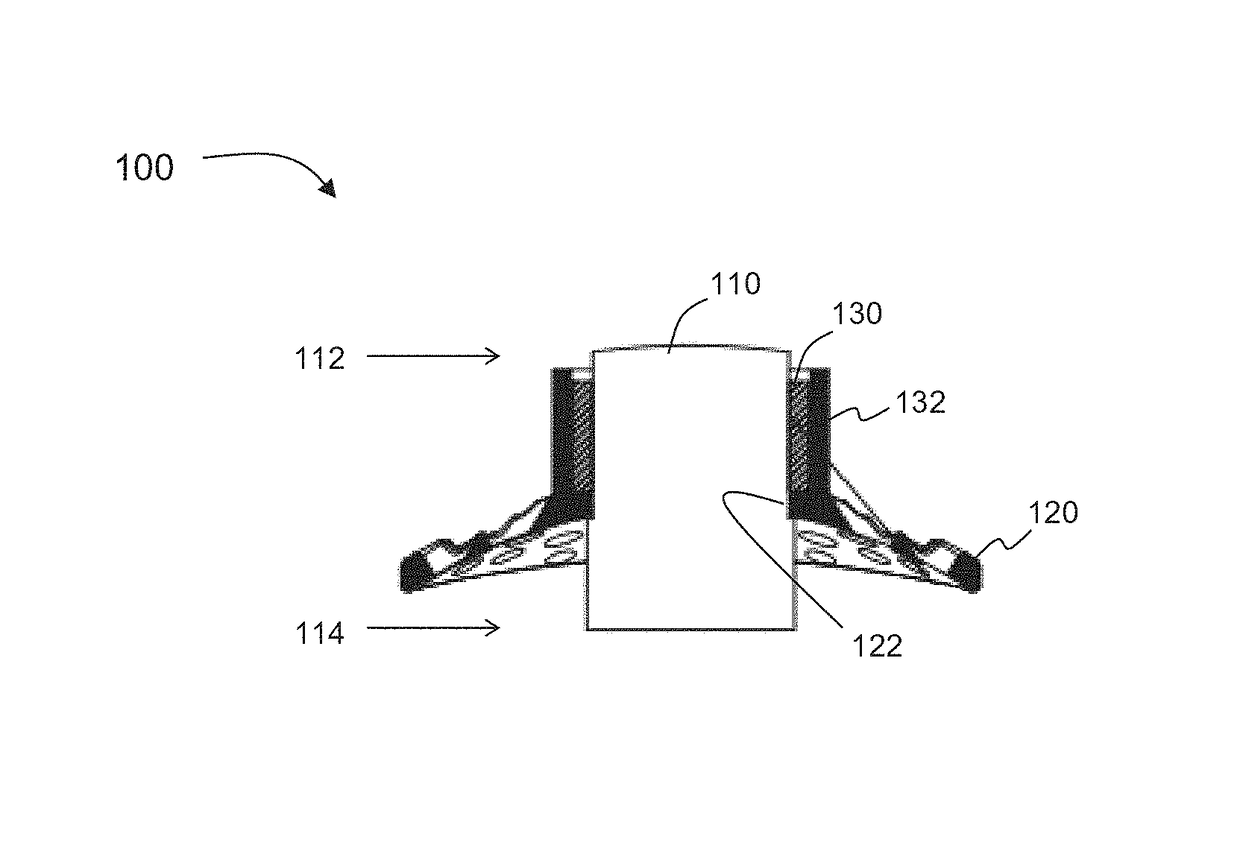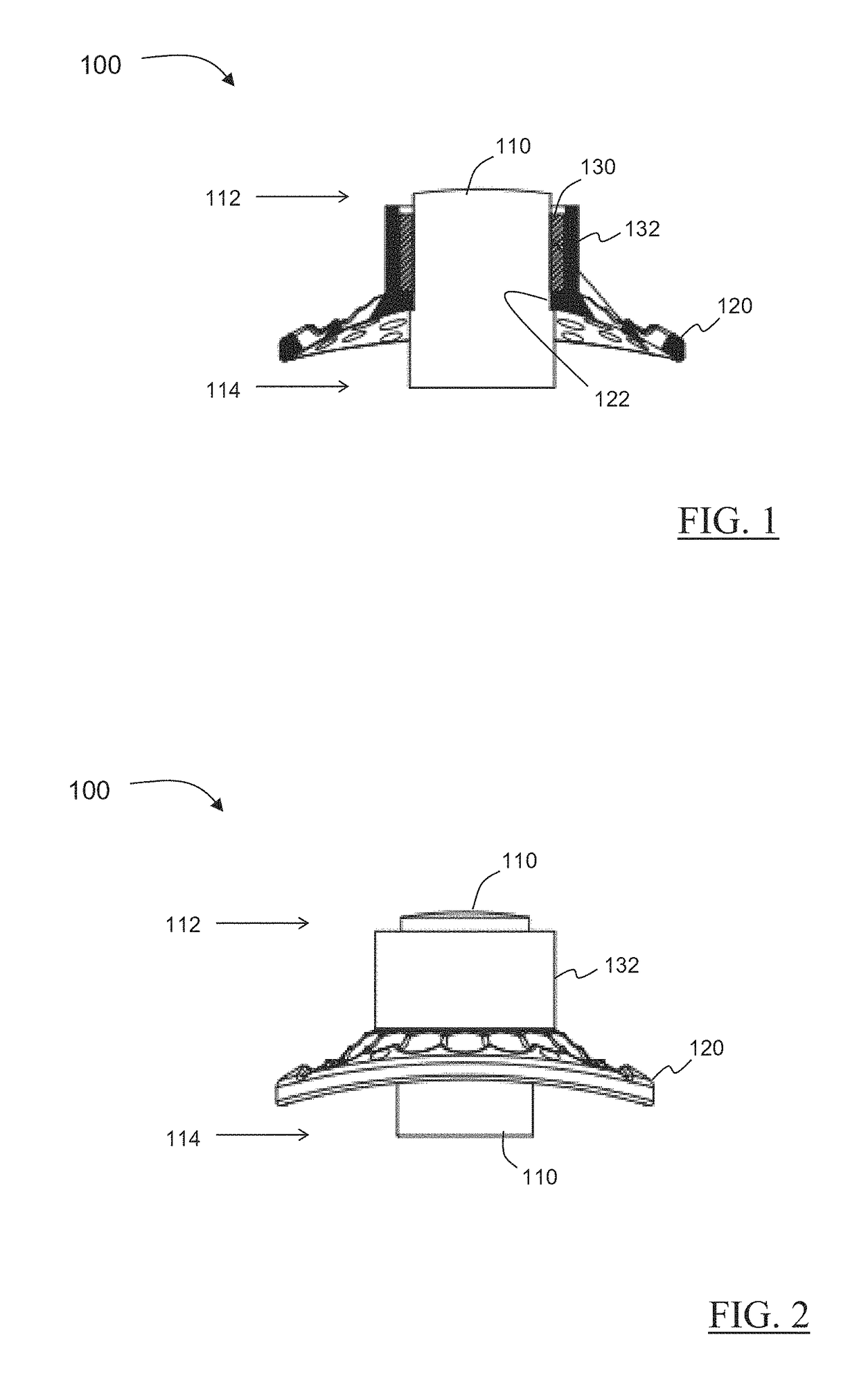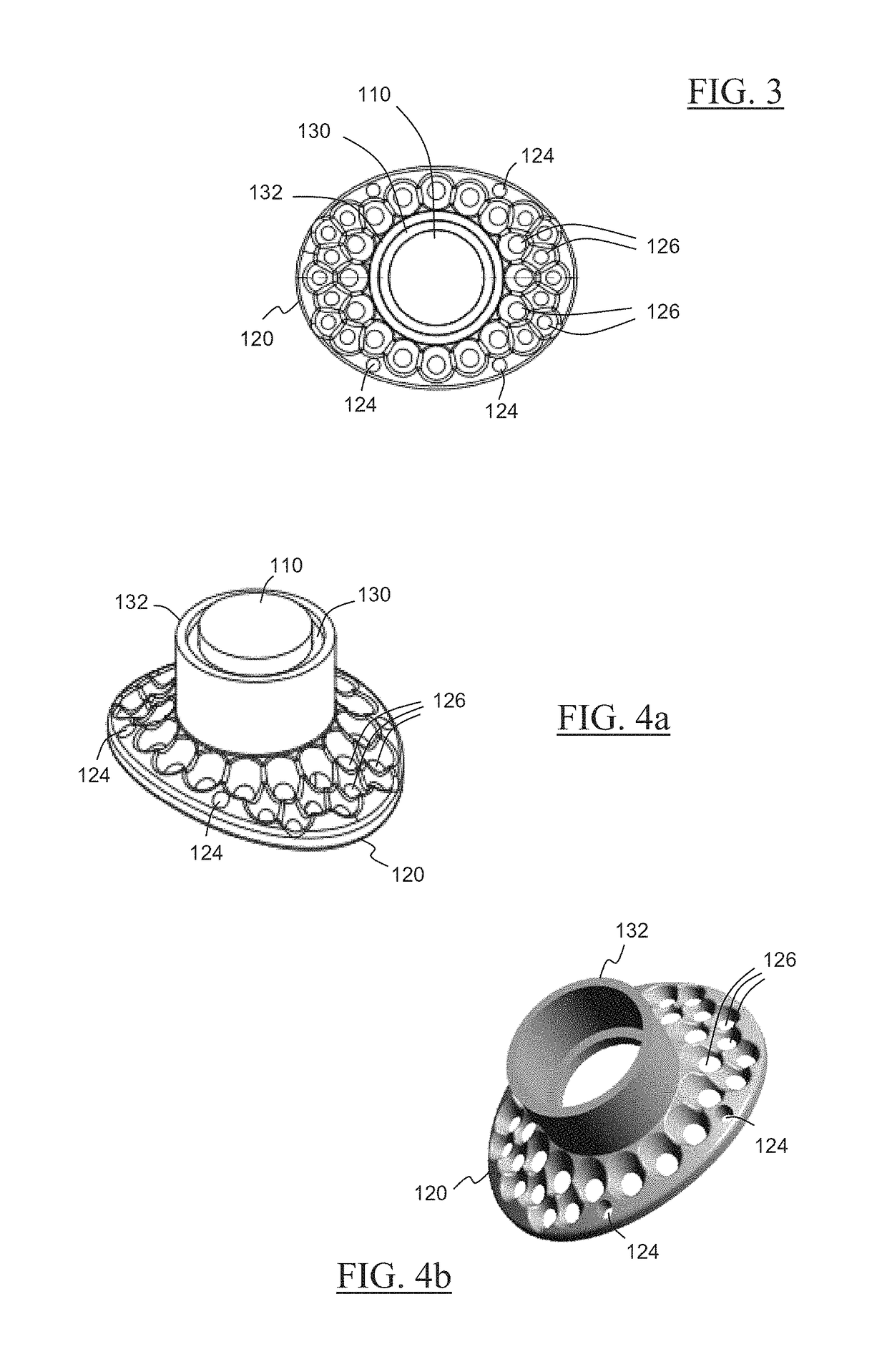Keratoprosthesis, and system and method of corneal repair using same
a corneal and keratoprosthesis technology, applied in the field of corneal repair, can solve the problems of scarring of the cornea and cornea, severe damage to the cornea, limited management, etc., and achieve the effect of improving soft tissue adhesion and less extrusion
- Summary
- Abstract
- Description
- Claims
- Application Information
AI Technical Summary
Benefits of technology
Problems solved by technology
Method used
Image
Examples
Embodiment Construction
[0033]The present invention is directed to a novel keratoprosthesis and a system and method for implementing the same in repairing severe corneal damage. The present invention promotes the adhesion of soft tissue to the implanted keratoprosthesis to form a bioseal, prohibiting epithelial infiltration and extrusion that plagues currently available keratoprostheses. Moreover, the present keratoprosthesis produces no oral defects, and involves fewer ocular complications.
[0034]To begin, the keratoprosthesis of the present invention, shown throughout the Figures as 100, comprises an optic member 110 disposable in vision facilitating relation to the eye of a patient. As should be readily understood by those skilled in the art, the optic member is a cylinder or tube-like structure that houses a lens through which light passes in order for vision to occur. The optic member 110 used herein may be made from any appropriate and biologically compatible material, such as polymethylmethacrylate (...
PUM
 Login to View More
Login to View More Abstract
Description
Claims
Application Information
 Login to View More
Login to View More - R&D
- Intellectual Property
- Life Sciences
- Materials
- Tech Scout
- Unparalleled Data Quality
- Higher Quality Content
- 60% Fewer Hallucinations
Browse by: Latest US Patents, China's latest patents, Technical Efficacy Thesaurus, Application Domain, Technology Topic, Popular Technical Reports.
© 2025 PatSnap. All rights reserved.Legal|Privacy policy|Modern Slavery Act Transparency Statement|Sitemap|About US| Contact US: help@patsnap.com



